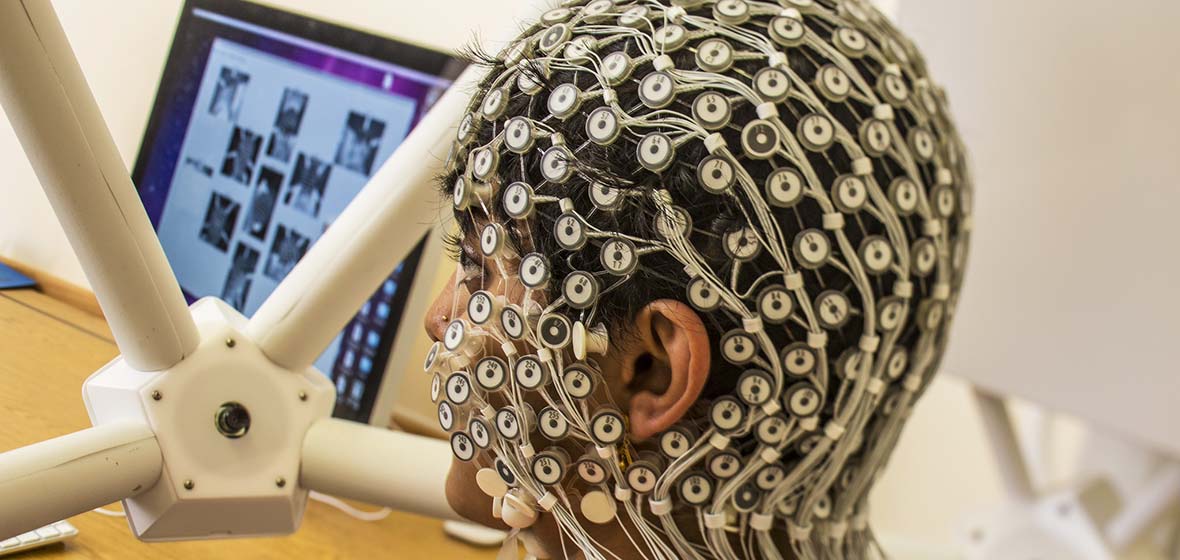A team of researchers led by Professor Michael Webster at the University of Nevada, Reno has received a second phase of funding to support the University's Center for Integrative Neuroscience, funded by a National Institutes of Health Center of Biomedical Research Excellence (COBRE) Award. The center received an initial $10 million grant for Phase I of the COBRE in 2012, and this September, was awarded an additional $10.6 million for five years to support Phase II. COBREs can receive up to three phases of support.
The COBRE is part of the NIH IDEA Program, which is designed to build biomedical research capacity and a critical mass of investigators. The University has also received support for COBREs focused on Smooth Muscle Plasticity and Cell Biology at the University of Nevada, Reno School of Medicine. The Center for Integrative Neuroscience is directed by Webster, a Foundation Professor in the psychology department in the College of Liberal Arts, and supports faculty and research facilities throughout the campus.
Phase I of the COBRE provided research support and mentoring for seven project leaders and five pilot project leaders, all tenure-track junior faculty in the Colleges of Liberal Arts, Science, or Engineering. During Phase I, the Center also established research cores supporting neuroimaging and molecular imaging and microscopy. These cores included establishing the first access in northern Nevada to functional Magnetic Resonance Imaging (fMRI), by partnering with the MRI facility at Renown Health. fMRI uses a clinical MRI scanner to monitor brain activity to examine the neural bases of perception and cognition, and is a tool that has become central to modern cognitive neuroscience.
Webster is excited about the opportunities that the new round of funding will bring.
"We're hoping to use this phase of support to solidify and expand what we've already started and ensure a lasting impact," Webster said.
The COBRE provides up to three years of project support and intensive mentoring to help junior faculty become competitive for extramural support. Webster's COBRE is providing support for eight tenure-track faculty in the first year of Phase II:
- Mihye Ahn in mathematics is developing large-scale statistical models for interpreting neuroimaging measurements.
- David Feil-Seifer in computer science is developing robots that can assist stroke victims in their recovery.
- Paul MacNeilage in psychology studies how the sense of balance interacts with vision to guide our own motion and why these interactions can lead to motion sickness in virtual reality.
- Dennis Matthew in biology uses fruit flies to understand the sense of smell and how the brain identifies and understands different odors.
- Pedro Miura in biology is studying the functions of non-coding RNA in the nervous system.
- Jenny Ouyang in biology is working with birds to study the effects of urban versus natural lighting on the brain and adaptation to these different environments.
- Lars Strother in psychology is using behavioral experiments and fMRI to explore how the human brain understands written text.
- Yong Zhang in biology is examining the mechanisms regulating the brain's circadian clock.
In addition to supporting these projects, the COBRE will also continue to support and expand critical research resources at the University. The Phase II plans include further expanding the Neuroimaging Core (directed by Strother, psychology) and the Molecular Imaging Core (directed by Alexander van der Linden, biology), and establishing a new core for research using Virtual and Augmented Reality (directed by Eelke Folmer, computer science).
"As part of the new phase of support, we are also planning to create a formal Institute of Neuroscience, which will allow the research aims of the COBRE to more closely connect with and support the training aims of the University's undergraduate and doctoral programs in neuroscience," Webster said.
The University started a bachelor's of science degree in neuroscience more than seven years ago which has grown to 400 majors, and the doctoral program is beginning its third year, with two dozen graduate students and more than 50 affiliated faculty. Webster led the creation of both degree programs and co-directs them along with serving as the Principal Investigator for the COBRE award.












